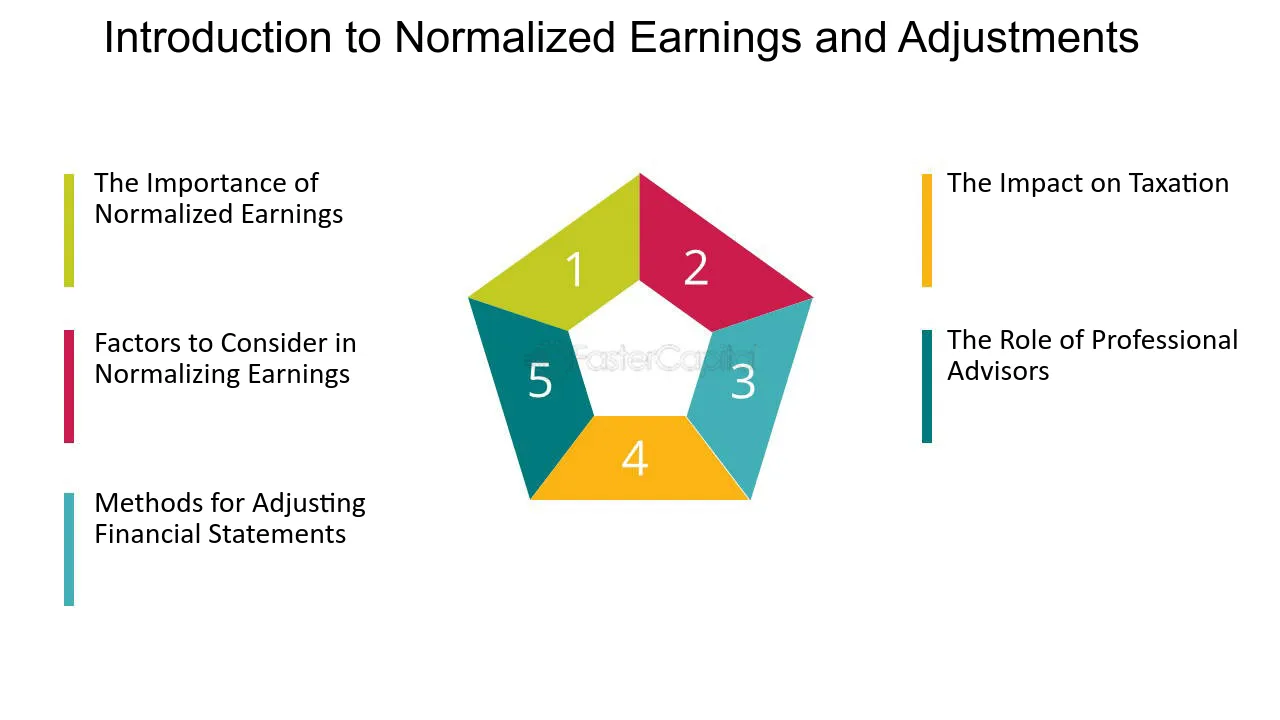What are Normalized Earnings?
Normalized earnings refer to a financial metric that adjusts a company’s reported earnings to account for any irregular or non-recurring factors. It aims to provide a clearer and more accurate picture of a company’s ongoing profitability by removing one-time events or fluctuations that may distort the earnings figure.
Companies often experience fluctuations in their earnings due to various factors such as changes in accounting methods, one-time gains or losses, restructuring costs, or other non-recurring events. These fluctuations can make it difficult for investors and analysts to assess the true underlying profitability of a company.
Normalized earnings help to eliminate these distortions by adjusting the reported earnings to reflect a more consistent and sustainable level of profitability. This is achieved by removing the impact of one-time events or irregularities and smoothing out any fluctuations that may not be representative of the company’s ongoing operations.
The process of normalizing earnings involves identifying and analyzing the non-recurring factors that have affected the reported earnings. This may include excluding one-time gains or losses, restructuring costs, write-offs, or any other irregular items that are not expected to occur regularly in the future.
Normalized earnings are particularly useful when evaluating companies in cyclical industries or those that are undergoing significant changes or restructuring. They provide a more reliable measure of a company’s underlying profitability and can help investors make more informed investment decisions.
The Purpose of Normalized Earnings
Normalized earnings play a crucial role in financial analysis and decision-making processes. They provide a more accurate representation of a company’s true financial performance by adjusting for irregular or non-recurring factors that can distort the reported earnings.
The main purpose of normalizing earnings is to eliminate any temporary or one-time events that may artificially inflate or deflate a company’s profits. These events can include extraordinary expenses, gains or losses from the sale of assets, changes in accounting methods, or any other non-recurring items.
Normalized earnings also help in making reliable forecasts and projections for future performance. By removing the impact of one-time events, investors can better assess a company’s future growth potential and make more informed investment decisions.
Furthermore, normalized earnings are essential in valuing a company. When determining the value of a business, investors and analysts often use earnings multiples, such as price-to-earnings (P/E) ratio. Normalizing earnings ensures that the valuation is based on a more stable and representative earnings figure, leading to a more accurate assessment of the company’s worth.
In summary, the purpose of normalizing earnings is to provide a clearer and more accurate picture of a company’s financial performance, remove the impact of irregular events, facilitate reliable forecasting, and enable more accurate valuation. It is a crucial tool in financial analysis and decision-making processes, helping stakeholders make informed decisions based on a company’s true earnings potential.
The Benefits of Normalized Earnings

Normalized earnings play a crucial role in financial analysis and decision-making. By adjusting for irregular or non-recurring items, these earnings provide a more accurate representation of a company’s true financial performance. Here are some key benefits of using normalized earnings:
- Improved comparability: Normalized earnings allow for better comparisons between different periods or companies. By removing one-time events or accounting adjustments, the earnings become more consistent and reliable, enabling investors and analysts to make more accurate assessments.
- Enhanced forecasting: Normalized earnings provide a more stable foundation for forecasting future performance. By eliminating the noise caused by irregular items, analysts can better identify trends and patterns, allowing for more accurate projections of future earnings.
- Better valuation: Normalized earnings are often used as a basis for valuation models. By using earnings that reflect the company’s sustainable profitability, investors can arrive at a more accurate valuation, leading to better investment decisions.
- Reduced earnings manipulation: Normalized earnings can help detect and discourage earnings manipulation. By excluding irregular items, companies are less likely to engage in practices that artificially inflate or deflate their reported earnings, providing a more reliable picture of their financial performance.
- Improved risk assessment: Normalized earnings enable a more comprehensive evaluation of a company’s risk profile. By removing one-time gains or losses, analysts can better assess the company’s ability to generate consistent and sustainable earnings, reducing the risk of relying on misleading financial information.
Examples of Normalized Earnings

Normalized earnings is a financial concept that helps investors and analysts understand the true profitability of a company by adjusting for one-time or non-recurring items. Here are some examples of how normalized earnings can be calculated and used:
1. Eliminating Non-Recurring Expenses: One common example of normalizing earnings is to eliminate non-recurring expenses, such as restructuring costs or legal settlements. These expenses are not expected to occur on a regular basis and can distort the true profitability of a company. By removing them from the earnings calculation, investors can get a clearer picture of the company’s ongoing profitability.
2. Adjusting for Seasonality: Some businesses experience seasonal fluctuations in their earnings. For example, a retail company may generate higher sales and profits during the holiday season. To normalize earnings, analysts can adjust for these seasonal variations by calculating an average or using a seasonal index. This allows for a more accurate comparison of the company’s performance across different periods.
3. Removing Extraordinary Gains or Losses: Extraordinary gains or losses, such as gains from the sale of assets or losses from natural disasters, can significantly impact a company’s earnings. These events are not expected to occur regularly and can distort the true profitability of a company. By excluding these items from the earnings calculation, investors can better assess the company’s ongoing performance.
4. Accounting for Changes in Accounting Methods: Companies may change their accounting methods, which can affect their reported earnings. For example, a company may switch from using the LIFO (last-in, first-out) method to the FIFO (first-in, first-out) method for valuing inventory. This change can impact the cost of goods sold and, consequently, the earnings. By normalizing earnings, analysts can adjust for these changes and make more accurate comparisons across different periods.
5. Adjusting for Non-Cash Expenses: Non-cash expenses, such as depreciation and amortization, do not involve an actual outflow of cash but can impact a company’s earnings. By normalizing earnings, these non-cash expenses can be added back to the earnings calculation to provide a clearer picture of the company’s cash flow and profitability.

Emily Bibb simplifies finance through bestselling books and articles, bridging complex concepts for everyday understanding. Engaging audiences via social media, she shares insights for financial success. Active in seminars and philanthropy, Bibb aims to create a more financially informed society, driven by her passion for empowering others.
